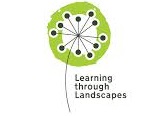Learning & discovering nature
Using resources, locations and facilities that take learning outside the classroom environment offers opportunities for schools and teachers to engage children in new, exciting and interactive learning challenges.
From finding bugs under logs on the school field to growing sweet peas on a small piece of the school playground the possibilities are endless. There is also great potential to discover the world beyond the school gate and engage with the local community through science, history, literacy and numeracy. Remember, ‘Adventure is out there’.






